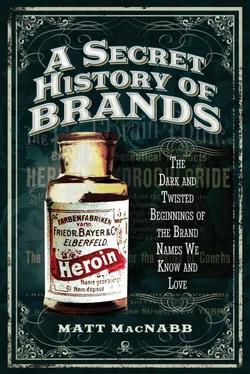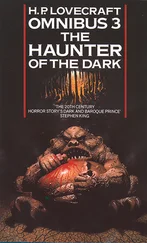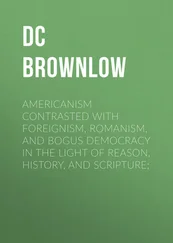Rudolf returned to a very different landscape at home. The Dassler family villa was requisitioned for use by American soldiers, so the family was now living in the factory tower. The conditions there were close and cramped, which naturally lead to emotional clashes and fighting amongst the two families. The brothers would fight about everything from money to control. The breaking point came when Adi was interrogated for an unprecedented second time by the Americans. Coming so long after he had already been cleared, it was obvious that someone had tipped-off the authorities to issues with Adi’s denazification. Rudolf had tried to discredit his brother, badmouthing him to the authorities. The Americans would soon drop the case against Adi, seeing quickly that it was one disgruntled brother’s word against another.
It was impossible to run a business together after all the post-war drama so, in 1948, the Dassler brothers decided that they had to divide the company in half. The workforce was quickly notified and the separation began. Rudolf assembled all of the employees to tell them that the brothers were forming two different companies and that they would all need to choose which brother to follow, because once they left with one brother, they wouldn’t be welcome to work for the other. It is estimated that about two thirds of the workforce sided with Adi, which primarily consisted of the shoemakers, while most of the salesmen went with Rudolf.
The news shocked the workers and naturally rumours began to swirl about the real reason for the split. The most prevalent were rumours of an affair between Rudolf and his sister-in-law. The employees had a major decision to make: did they follow the salesman or the inventor? The brothers divided up the materials and machinery and set up competing shoe manufacturing businesses a mere 500m apart from each other. Adi started ‘Adidas’ and Rudolf founded ‘Puma’. The local population eventually got drawn into the conflict. The companies each had their own football club and the two teams were bitter rivals. Puma and Adidas employees wouldn’t even sit at the same table while drinking at their local pub. It’s hard to say whether the divide was due to extreme loyalty, or fear of being associated with the enemy and being fired.
The two brothers and their families never made-up and their bitter feud lasted until the time of their deaths. The two companies did issue a press release in 2009 to announce that Adidas and Puma would come together to participate in their first joint activity since the two companies opened back in 1948. They united to support the Peace One Day organisation for its annual non-violence day.
Chapter Five
Chanel: Hitler’s Seductive Spy
You know, they ask me questions. Just an example: ‘What do you wear to bed? A pajama top? The bottoms of the pajamas? A nightgown?’ So I said, ‘Chanel No. 5,’ because it’s the truth… And yet, I don’t want to say ‘nude.’ But it’s the truth!
— Marilyn Monroe
The name Coco Chanel is synonymous with fashion and haute couture. The enduring brand name has survived and thrived long after the passing of its namesake. Chanel has been regarded by some as the greatest fashion designer who ever lived, she is certainly one of the most infamous. Her name has endured, not only on clothing, but also jewellery, handbags and of course perfume. Her magnum opus, Chanel No. 5, is one of the most popular and best-selling fragrances of all-time. Coco was a powerful and ambitious businesswoman and a pioneer in many ways. She was also widely regarded as a vicious and horrible person, a Nazi sympathiser, and eventually even a Nazi spy.
Her Early Life
Gabrielle ‘Coco’ Chanel had a troubled early life. She was born on 19 August 1883 in Saumur, Maine-et-Loire, France. Chanel was, literally, born in the poorhouse, specifically the Sisters of Providence charity hospital. Her mother, Eugenie Jeanne Devolle, worked in the poorhouse as a laundrywoman, and her father, Albert Chanel, was a travelling street vendor. The level of poverty that Gabrielle was born into should not be underplayed, and in fact played a large part in shaping her character throughout her life.
The French commune into which Chanel was born was very similar to a municipality in America. Saumur was a self-governed and somewhat isolated town tucked snugly between the Loire and Thouet rivers and surrounded by vineyards. The commune is located near the famous Champagne wine region and was well known for its sparkling wines. The Saumur area has been settled for thousands of years in one form or another. The ornate skyline of the town includes the impressive Chateau de Saumur castle that was constructed as a stronghold to protect the region from the advancing Normans in the tenth century. The chateau was sacked and later rebuilt by King Henry II. The town later served as a state prison under the rule of Napoleon and is famous for being the base of operations for the French military riding academy, and for its wine. During the Second World War, the German forces advanced on the town in an attempt to head-off the newly landed Allied forces in Normandy; the town was badly damaged from bombings and the German Panzer tanks rumbling through the area. Saumur would be awarded the Croix de Guerre after the war in tribute to the resistance and patriotism demonstrated by the townspeople in the face of great danger.
Saumur may have been an ornate and beautiful area, but the reality of life was very different for those in the lower classes. The sweeping poor laws of the previous century had produced exploitative and harsh workhouses, also known as poorhouses, in an effort to provide accommodation and provisions for the poor. The workhouse wasn’t a pleasant place for a child to grow-up. If you weren’t a highborn individual, then you could look forward to a life of poverty and hard work. The able-bodied women were put to work doing a variety of domestic jobs like sewing, cleaning, cooking, gardening or laundry. Gabrielle’s mother worked as a laundrywoman for the charity hospital run by the Sisters of Providence.
Life in the poorhouse was a difficult one. The toilet facilities in the workhouses were used by well over one hundred inmates and would also often include a communal chamber pot. The men and women were kept separate to avoid indiscretions. The children would also often be housed separately, at least when it came to sleeping quarters, and were subject to bed sharing to save space. The pre-set diet in the workhouse consisted primarily of bread, gruel and cheese. If you were lucky you might get a small serving of meat up to twice a week. The set restrictions could provide, for example, a meagre supper that included 5oz of bread and 1.5oz of cheese for an adult woman. The children in the workhouse were typically afforded the same diet as an adult woman, as long as they were over the age of 9; if you were under 9 it was up to the discretion of the staff. Meals were eaten in a large communal hall that often included the reading of biblical texts out loud to remind the inmates of the gratitude that they should be feeling for the charity that was being bestowed upon them.
Chanel would find herself in an orphanage by the time she was 12 years old. Her mother had died of bronchitis and her father had sent her and her two sisters away to live at the convent of Aubazine, where she would remain until the age of 18. Her time with the nuns in the convent would provide her with the groundwork that would come to build her entire empire – and change her fate forever – the ability to sew. This loss at a young age and lack of familial attachment would help mould her into an independent person who had little conflict putting her own needs first.
Читать дальше












